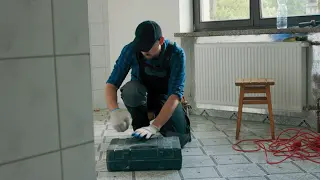Push-to-Connect Fittings vs Soldering is a question many plumbers and DIY enthusiasts face when installing or repairing copper piping. The process of cutting, cleaning, and heating copper for a solder joint is tried and true, but push-to-connect fittings—especially newer systems like QuickFitting—offer simple, tool-free assembly. Below is an in-depth look at how the two methods compare, including how much time you might save, the steps involved, and the role that warranties and best practices play.
The Classic Method: Soldering Copper Pipe
Soldering remains a cornerstone of professional plumbing. By heating the fitting and pipe, you allow the solder to melt and create a watertight seal. However, soldering takes practice, time, and a clear workspace. Here’s a brief outline:
- Cut the pipe to length.
- Clean both pipe ends with an emery cloth or fitting brush.
- Ream the inside of the pipe to remove burrs.
- Apply flux to the outside of the pipe and the inside of the fitting.
- Heat the joint using a propane or MAP gas torch until the solder melts and flows.
- Let it cool without disturbing the joint.
- Inspect and test for leaks.
Pros of Soldering:
- Proven track record and widespread code acceptance.
- Material costs (copper + solder) are relatively straightforward.
- Tolerant of high temperatures and pressures if done correctly.
Cons of Soldering:
- Requires open flame, which can pose a fire risk near wood or insulation.
- Demands more time for preparation, heating, and cooling.
- Not always feasible if the line can’t be completely drained or if you’re in a tight space.
The Alternative: Push-to-Connect Fittings
Push-to-connect fittings, such as QuickFitting, allow you to attach a copper or CPVC pipe by simply pressing the pipe into the fitting. An internal O-ring and gripping teeth create a fast, secure seal. Installation can be done without specialized torches or flux. The procedure is simpler:
- Cut the pipe to the desired length.
- Deburr the pipe edges to avoid damaging the O-ring.
- Mark the insertion depth so you know when the pipe is fully seated.
- Push the pipe into the fitting until it reaches the mark.
- (Optional) Use a release tool if you ever need to remove or reposition the fitting.
Pros of Push-to-Connect:
- Rapid assembly without flame, flux, or solder.
- Great option for tight spaces or repairs when water can’t be fully drained.
- Some brands now offer advanced warranties, covering not just parts but also labor.
Cons of Push-to-Connect:
- Many older push fittings had limited warranties or lesser brand reputations.
- The fittings can be more expensive per unit than a simple copper coupling.
- Proper insertion depth and pipe prep remain crucial. An improperly cut or seated pipe can lead to leaks.
Time Comparison
Imagine assembling a small piping setup with several connections. Soldering each joint involves pipe cleaning, flux application, heating, soldering, and cooling. Meanwhile, with push fittings, once you’ve cut and deburred the pipe, you just push the joint together in seconds. Over large jobs with many joints, the time savings can be significant. Also, the skill barrier is lower: you don’t need years of practice to ensure a leak-free push fitting.
Warranty Considerations
Traditional push-to-connect fittings often carry warranties around 25 years, while QuickFitting, for example, has a 75-year product warranty. Some manufacturers also back labor costs if the fitting is registered and fails under correct installation conditions. In contrast, soldered copper is only as good as the workmanship. If a solder joint fails, that’s typically on the installer’s shoulders. The improved warranties for advanced push fittings can be a big confidence boost for pros deciding to switch methods.
Proper Technique Still Matters
Regardless of method, correct prep is key. Soldering demands thorough cleaning and a consistent flame technique. Push fittings need accurate pipe measurement, clean edges, and marking insertion depth. Skipping any step can lead to leaks and potentially major water damage. Experienced plumbers often carry both types of fittings, choosing what’s most efficient or code-compliant for each job.
When to Solder vs. When to Push
Soldering is still preferred where high-heat tolerance is necessary or where code restricts push fittings. It’s also the go-to for many commercial or large-scale projects because of tradition and comfort. Push fittings excel in emergency repairs—such as a burst line in a wall, or an older home with moisture-laden pipes that are hard to solder. Also, if you plan to dismantle or modify the piping frequently, push fittings allow easy removal.
Tips for Better Results
- Always check local codes or inspector preferences, as not all jurisdictions treat push fittings equally.
- Store push fittings in a clean environment; keep the internal O-ring free of debris.
- For soldering, shield walls or studs with a heat-resistant pad or damp rag to minimize fire risk.
- Pressure-test the system before closing up walls or enclosures, no matter which method you used.
Conclusion
Both soldering and push-to-connect fittings have their place in modern plumbing. Soldering remains a time-tested skill that can yield robust joints, but it requires more labor and precision. Push fittings bring significant speed and simplicity, especially when dealing with tight spaces or time-sensitive repairs. With advanced warranties and new designs, push fittings can be a reliable and code-friendly solution, and can significantly reduce installation time. Ultimately, the choice may depend on personal preference, local regulations, and the specifics of each job.
If you’re on the fence, consider a hybrid approach: solder the main lines where you have the time and space, and use push-to-connect fittings in tricky or emergency scenarios. As more contractors adopt push fittings and trust them for permanent installs, the industry stands to benefit from faster jobs, fewer burn risks, and more consistent results.




